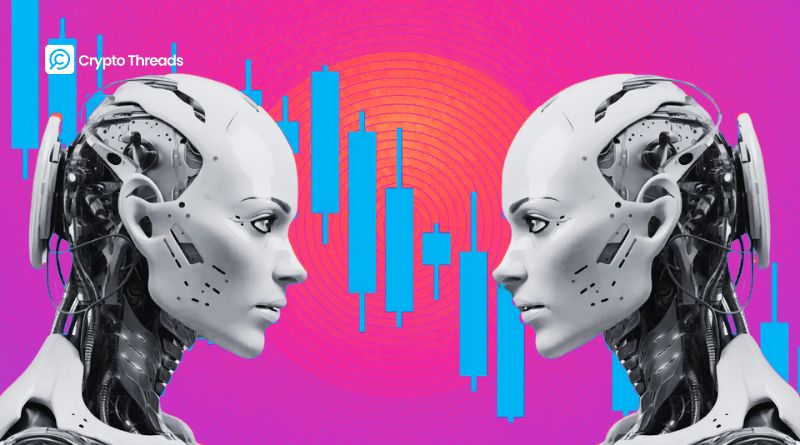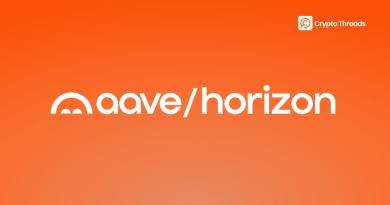AI Agents in Cryptocurrency: Uncovering Critical Security Vulnerabilities That Could Impact the Market
Introduction: The Rise of AI Agents in Cryptocurrency

Artificial intelligence agents are rapidly transforming the cryptocurrency landscape, automating trading decisions, managing portfolios, and executing complex blockchain transactions. However, recent research has revealed significant security vulnerabilities that could pose substantial risks to the crypto ecosystem. As AI adoption accelerates in decentralized finance (DeFi) and trading platforms, understanding these vulnerabilities becomes crucial for investors, developers, and financial institutions.
What Are AI Agents in Cryptocurrency?
AI agents in the crypto space are autonomous software programs designed to perform various blockchain-related tasks without human intervention. These intelligent systems can:
- Execute automated trading strategies based on market analysis
- Manage cryptocurrency portfolios across multiple exchanges
- Interact with smart contracts and DeFi protocols
- Provide real-time market insights and predictions
- Facilitate cross-chain transactions and arbitrage opportunities
The integration of AI technology has promised to enhance efficiency, reduce human error, and capitalize on market opportunities that traditional trading methods might miss.
Major Vulnerabilities Identified in Crypto AI Agents
1. Smart Contract Interaction Risks
Common smart contract security vulnerabilities Source: Blaize.Security
AI agents frequently interact with smart contracts, creating potential attack vectors. Malicious actors can exploit these interactions through:
- Contract manipulation: Designing fraudulent smart contracts that appear legitimate to AI systems
- Parameter poisoning: Feeding incorrect data to AI agents during contract execution
- Logic bomb attacks: Embedding hidden malicious code that activates under specific conditions
2. Data Feed Manipulation
AI agents rely heavily on external data sources for decision-making. Vulnerabilities include:
- Oracle manipulation: Compromising price feeds and market data sources
- Social media sentiment attacks: Manipulating sentiment analysis through coordinated fake news campaigns
- API vulnerabilities: Exploiting weaknesses in third-party data provider interfaces
3. Machine Learning Model Exploitation
The AI models themselves present security risks:
- Adversarial attacks: Crafting specific inputs designed to fool AI decision-making algorithms
- Model poisoning: Contaminating training data to influence AI behavior
- Backdoor attacks: Installing hidden triggers that activate malicious behavior under certain conditions
4. Private Key and Wallet Security
AI agents with access to cryptocurrency wallets face unique security challenges:
- Key exposure: Potential leakage of private keys through logging or memory dumps
- Unauthorized transactions: AI systems making unintended trades due to manipulation
- Multi-signature vulnerabilities: Exploiting weaknesses in automated multi-sig implementations
Real-World Impact and Case Studies

Several incidents have already demonstrated the potential consequences of AI agent vulnerabilities in cryptocurrency:
Flash Loan Attacks
AI-powered DeFi protocols have been targeted through sophisticated flash loan attacks, where attackers manipulate AI decision-making within a single transaction block, resulting in millions of dollars in losses.
Trading Bot Manipulation
Cryptocurrency trading bots using AI algorithms have fallen victim to market manipulation schemes, where coordinated efforts create false market signals that trigger unwanted trading behavior.
Cross-Chain Bridge Exploits
AI agents managing cross-chain transactions have been exploited through bridge vulnerabilities, leading to significant financial losses and network disruption.
Protecting Against AI Agent Vulnerabilities
For Developers
Implement Robust Testing Protocols
- Conduct comprehensive adversarial testing of AI models
- Implement fuzzing techniques to identify edge cases
- Regular security audits of smart contract interactions
Secure Data Management
- Use multiple, diverse data sources to prevent single points of failure
- Implement data validation and anomaly detection systems
- Establish secure communication channels with external APIs
Access Control and Permissions
- Implement principle of least privilege for AI agent permissions
- Use hardware security modules (HSMs) for private key management
- Establish multi-factor authentication for critical operations
For Investors and Users
Due Diligence Practices
- Research the security practices of AI-powered platforms before investing
- Understand the AI models and data sources being used
- Monitor for unusual account activity and transaction patterns
Risk Management Strategies
- Diversify across multiple AI agents and platforms
- Set appropriate position limits and stop-loss mechanisms
- Maintain manual oversight of automated systems
Stay Informed
- Keep updated on the latest security vulnerabilities and patches
- Participate in community discussions about AI agent security
- Follow security advisories from platform providers
Industry Response and Mitigation Efforts
The cryptocurrency industry is actively addressing these vulnerabilities through various initiatives:
Regulatory Developments
Financial regulators worldwide are developing frameworks specifically addressing AI in financial services, including cryptocurrency applications. These regulations aim to establish minimum security standards and operational requirements.
Open Source Security Tools
The community is developing open-source tools for testing and securing AI agents, including automated vulnerability scanners and adversarial testing frameworks
Industry Collaboration
Major cryptocurrency exchanges and DeFi platforms are collaborating on security standards and best practices for AI agent deployment.
Future Implications for the Crypto Market
The identification of these vulnerabilities has significant implications for the cryptocurrency market’s future:
Market Confidence
Addressing AI agent vulnerabilities is crucial for maintaining investor confidence in automated crypto systems. Failure to do so could lead to reduced adoption and market volatility.
Innovation Direction
The security challenges are driving innovation in secure AI development, potentially leading to more robust and trustworthy systems.
Competitive Landscape
Platforms that successfully address these vulnerabilities may gain competitive advantages, while those that don’t may face reduced market share.
Best Practices for Secure AI Agent Implementation

Technical Recommendations
Multi-Layer Security Architecture
- Implement defense-in-depth strategies with multiple security layers
- Use anomaly detection systems to identify unusual behavior
- Establish secure communication protocols between AI components
Continuous Monitoring and Updates
- Deploy real-time monitoring systems for AI agent behavior
- Implement automated update mechanisms for security patches
- Maintain detailed logs for forensic analysis
Incident Response Planning
- Develop comprehensive incident response plans for AI-related security breaches
- Establish clear communication channels for security alerts
- Practice regular security drills and scenario planning
Operational Guidelines
Governance and Oversight
- Establish clear governance structures for AI agent operations
- Implement human oversight mechanisms for critical decisions
- Maintain transparency in AI decision-making processes
Risk Assessment and Management
- Conduct regular risk assessments of AI agent deployments
- Implement appropriate insurance coverage for AI-related risks
- Establish clear liability frameworks for AI agent actions
Conclusion: Navigating the Future of AI in Cryptocurrency
While AI agents represent a significant advancement in cryptocurrency technology, the identified vulnerabilities underscore the importance of prioritizing security in their development and deployment. The crypto industry must balance innovation with robust security practices to ensure the long-term viability and trustworthiness of AI-powered systems.
Success in this endeavor requires collaboration between developers, security researchers, regulators, and users. By addressing these vulnerabilities proactively and implementing comprehensive security measures, the cryptocurrency ecosystem can harness the benefits of AI technology while minimizing associated risks.
As the technology continues to evolve, ongoing vigilance and adaptation will be essential. The cryptocurrency community’s response to these challenges will ultimately determine whether AI agents become a cornerstone of secure, efficient crypto operations or a source of systemic risk that hinders broader adoption.
The future of AI in cryptocurrency depends on our collective ability to learn from these vulnerabilities and build more secure, resilient systems that can withstand the evolving threat landscape while delivering the promised benefits of artificial intelligence in financial technology.



